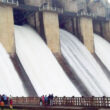The image of Kodagu, as a community which values its culture, heritage and forests, has unfortunately been severely dented by the utterings and actions of a section of people from Kodagu. Coffeeland News investigated the allegations of this isolated group and has come to the following conclusions;
It is therefore necessary to place all facts about the UNESCO Natural Heritage Site’ controversy’ before you the reader who we believe will seperate the wheat from the chaff.
Fiction 1: “Pseudo-Environmentalists” have secretly tried to get the forests notified as a UNESCO World Heritage Site.
Fact: The World Heritage Convention (WHC) is an International Treaty to which India is a signatory and the treaty has been ratified by over 177 countries. It recognizes the way people interact with nature and the fundamental need to preserve the balance between people and nature. The decision to scientifically identify and select Heritage Sites was initiated by the Ministry of Environment and Forests Government of India in the year 2002. The Government at the Centre during that period was headed by the respected Bharatiya Janatha Party (BJP) leader Atal Bihari Vajpayee who was a statesman and a man of vision. In fact the Member of Parliament (MP) of Kodagu/ Mangalore (Loka Sabha seat ) between 1999 and 2004 was Dhanjaya Kumar of the BJP. It is therefore extremely unfortunate that the present representatives who have been elected on the strength of Vajpayee’s leadership appear to be spreading falsehood that “pseudo-environmentalists” are trying to create the status of a UNESCO World Heritage Site. It is a fact that the “pseudo-environmentalists” have endorsed the visionary decision of the Vajpayee Government which any way does not propose to curtail the bona-fide rights of local people. It is also important to mention that more then 40 sites spread across seven states (including Gujarat-a BJP ruled State) are in the tentative list and not Kodagu alone.
Fiction 2: That the existing legal and bona fide rights over land of farmers will be snatched away by the UNESCO Heritage Site.
Fact: This is completely false and the question of eviction of villages does not arise under the present law of the land. No International Institution can within the boundaries of a sovereign State like India issue notifications for acquisitions of private lands in the district of Kodagu or enact laws to evict people for creating a Heritage Site. It is only the Government of India and the Government of Karnataka that can act in this regard. Moreso, it is the State Government alone that has the power to acquire lands from farmers. Further, all existing bona fide rights of people over private lands, Jamma Malais, notified legal rights of way, permission for grazing etc. are continuing and no new law is being created under the UNESCO Heritage proposal to curtail such bona fide activities.
Fiction 3: That “pseudo-environmentalists’; will get massive foreign funding from UNESCO
Fact: UNESCO is a body under the United Nations and as per the present arrangement it is Government of India that is the State Party with which the UNESCO is working and only the State Party is eligible for international assistance. Therefore, there is absolutely no truth in the statements that are repeatedly being made that “pseudo-environmentalists” have got massive foreign funding. This is complete falsehood.
So, how does the UNECO Natural Heritage Site benefit Kodagu District?
The long-term conservation of the biodiversity of Kodagu district will greatly help the farmers and coffee growers.
1. It is scientifically documented that the forested mountains of the Western Ghats greatly influence the monsoon weather patterns. The forested mountains intercept the rain-laden winds of the South-West monsoon which results in rainfall that is vitally important for farmers and coffee growers. 2. The biodiversity rich areas of Western Ghats in Kodagu are also precious storehouses of valuable genes of disease resistant varieties of many food crops. It therefore acts as an insurance policy for farmers.
3. The forests not only prevent soil erosion but also re-charge water aquifers and greatly enhance flow of water in streams by preventing sedimentation and flash flooding of low lying paddy fields.




